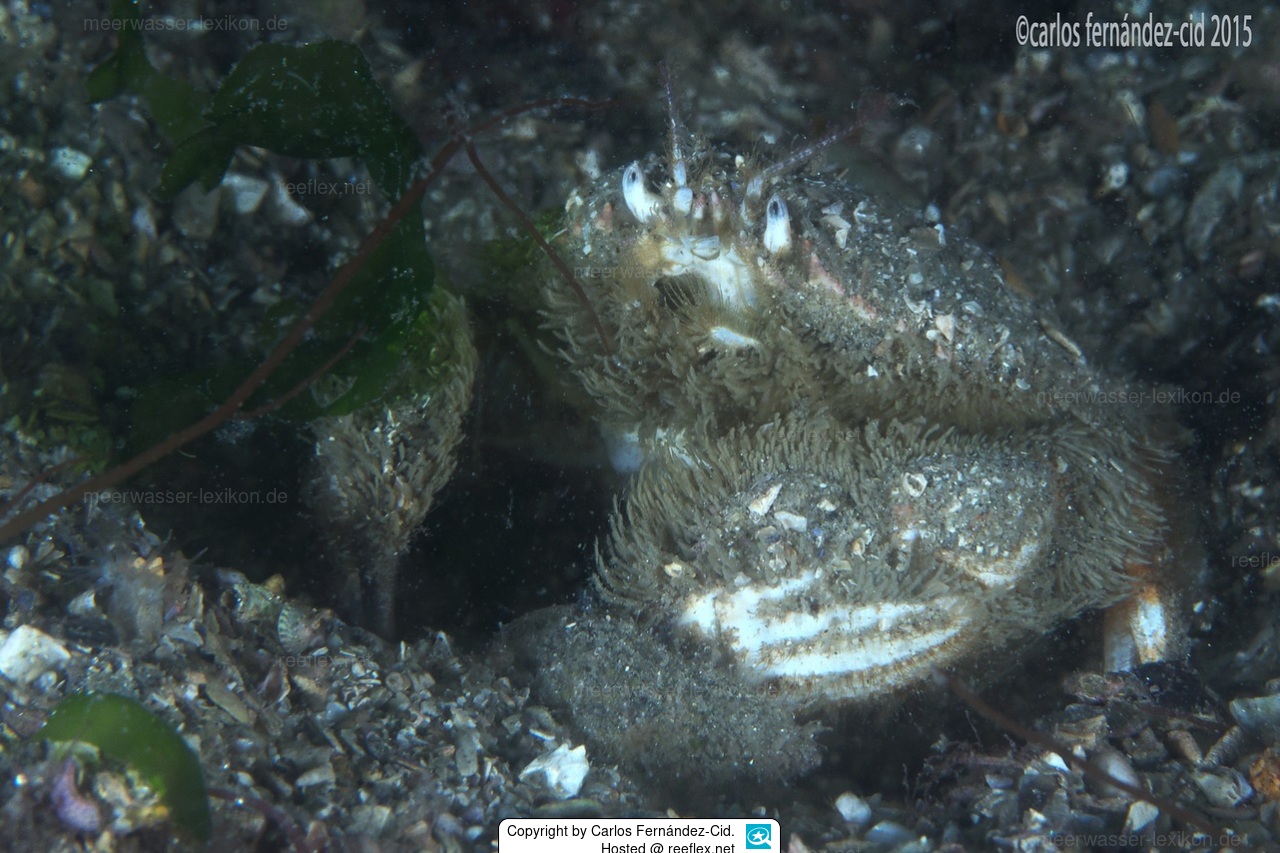Info
The body of this armored predator is quite hairy and has a whitish to cream color with purple spots on the carapace, it has a smooth texture and a fringe of long sides.
The carapace is wider than long, growing up to 5 cm long and 6.3 cm wide.
Atelecyclus undecimdentatus is often heavily soiled, which can alter its appearance.
It has short antennae that are only about a quarter of the length of the carapace, its claws are similar and have black tips.
Both the claws and legs have many bristles.
This crab is sometimes confused with the more common Atelecyclus rotundatus, but Atelecyclus rotundatus can be distinguished by its finer grain and narrower carapace.
Atelecyclus undecimdentatus lives on a seafloor that ranges from gravel to sandy mud, sometimes hidden under rocks and stones.
Synonyms:
Atelecyclus cruentatus Desmarest, 1825
Atelecyclus homoiodon Risso, 1827
Cancer amoenus Herbst, 1799
Cancer undecimdentatus Herbst, 1783
The carapace is wider than long, growing up to 5 cm long and 6.3 cm wide.
Atelecyclus undecimdentatus is often heavily soiled, which can alter its appearance.
It has short antennae that are only about a quarter of the length of the carapace, its claws are similar and have black tips.
Both the claws and legs have many bristles.
This crab is sometimes confused with the more common Atelecyclus rotundatus, but Atelecyclus rotundatus can be distinguished by its finer grain and narrower carapace.
Atelecyclus undecimdentatus lives on a seafloor that ranges from gravel to sandy mud, sometimes hidden under rocks and stones.
Synonyms:
Atelecyclus cruentatus Desmarest, 1825
Atelecyclus homoiodon Risso, 1827
Cancer amoenus Herbst, 1799
Cancer undecimdentatus Herbst, 1783







 Dr. Carlos Fernández-Cid, Galicia, Spanien
Dr. Carlos Fernández-Cid, Galicia, Spanien


